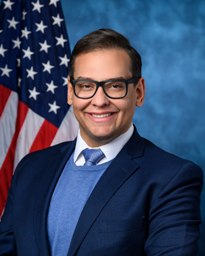One and Done? George Santos and a Review of 1-Term New York US Representatives
Nearly half of all U.S. Representatives from New York since statehood served just one term

Rep. Santos appears to be steadfast in holding onto his seat through the 118th Congress, though the situation is fluid with an ethics investigation likely to be forthcoming,
Although the details of his particular case may be novel, it would not be unusual for Santos to serve only one term in the chamber from the Empire State.
Prior to the 118th Congress, 664 of the 1,464 men and women to serve in the U.S. House from New York since statehood served just one full term or less, or 45.4 percent. [Santos and seven additional New Yorkers are also currently in their first term in the chamber].
However long Santos serves, he has at least avoided the shortest tenure in the chamber in New York history.
That title belongs to Republican attorney Kenneth Simpson, who served just 22 days from Manhattan’s Silk Stocking district before dying from a heart attack in January 1941 at the age of 45.
Santos passed Simpson last week and has now served 26 days through Sunday, January 29th.
Excluding the eight freshmen in the 118th Congress, a total of 39 New Yorkers have served less than one year in the chamber.
Of these 39, four died in office, five resigned, four lost their seats through election contests, and more than two-dozen entered via special election or by successfully contesting an election.
Next up in Santos’ sights on the New York U.S. Representative tenure list are:
- Democrat David Field (1877): 51 days
- Jacksonian David Evans (1827): 59 days
- Whig Nicholas Doe (1840-1841): 86 days
- Whig Thomas Ripley (1846-1847): 86 days
- Democrat Richard Schell (1874-1875): 86 days
All but eight of these 39 representatives who served less than a year were elected in the 18th and 19th Centuries and only two served since 1950:
- Democrat Alton Waldon (1986-1987): 6 months, 24 days (207 days)
- Republican Joseph Sempolinski (2022-2023): 4 months, 11 days (133 days)
Should Santos leave the U.S. House a one-termer, he will hardly be the most notable to do so. Other New York U.S. Representatives to serve just one term in the chamber include:
- Whig Horace Greeley (1848-1849): Founder and editor of the New York Tribune and 1872 Democratic and Liberal Republican presidential nominee
- Democrat William (Boss) Tweed (1853-1855): Head of Tammany Hall for more than a decade and convicted embezzler
- Democrat Joseph Pulitzer (1885-1887): Newspaper publisher and philanthropist
- Democrat Kathy Hochul (2011-2013): Sitting New York Governor
And, not to be forgotten, Benedict Arnold. No, not the more famous namesake, but an Anti-Jacksonian U.S. Representative from Amsterdam who served in the 16th Congress (1829-1831).
Follow Smart Politics on Twitter.

If Santos manages to stay in office through this week, he would also avoid being the shortest-serving U.S. House member in recent history for any reasonable definition of ‘recent’, as Kwanza Hall (D-Ga.) served one month from 2020 to 2021, having won a December special election to complete the term in the seat vacated by the death of John Lewis. [Hall was not a candidate in the election for the next full term, and his successor Nikema Williams was not a candidate in the special election.]
Also, it might be interesting to see how this data lines up with re-election rates of House members over time. If each House member in each cycle has a 50% chance of being re-elected and a 50% of retiring or losing re-election (assuming no mid-term resignations or deaths), then statistically we’d expect one-half of all members to serve only one term, one-quarter would serve two terms, one-eighth would serve three terms, etc. I’d imagine re-election rates have been increasing from the 18th/19th centuries to the present, but I don’t have numbers for sure.
You are correct, the % of 1-termers are much higher in the 18th and 19th Centuries – probably for a variety or reasons (fewer full-time politicians, lower life expectancy, no direct primary etc.). I didn’t add up the #s and %s for New York, but the vast majority were before the 20th Century.
Since early 2017, five first-term NY US representatives have lost their bids for second consecutive terms: Mondaire Jones, Max Rose, Anthony Joseph Brindisi, John James Faso, and Claudia Tenney.
“…would not be unusual…” While local and national media have provided wall-to-wall coverage of his political travails, “Santos/Devolder” may not be the only current first-term incumbent clearly vulnerable to defeat, or perhaps even the most vulnerable. Indeed, fellow Republicans “Tony” D’Esposito and “Mike” Lawler – neither even a perfunctory ally of Mr. Santos – might also be swept out next year, should a sufficiently strong tide arise in Nassau and Westchester Counties (the ’24 D presidential ticket is widely expected to outperform the ’22 D gubernatorial ticket in both).
Then there is Democratic Representative Daniel Sachs Goldman, a prominent national liberal representing a newly-created and unabashedly left-wing ‘Lower Manhattan & NW Brooklyn’ seat, who caught a couple of electoral breaks, first with splintered far-left local opposition (about three-quarters of the vote going against him but winning the determinative primary contest with 25.8% to 23.7%), then with the general-election non-candidacy by primary runner-up Yuh-Line Niou, who after long deliberation passed on the nomination of the Working Families Party. Given such a precarious start, a local sentiment even more favorable towards the militant left and a credible, single opponent might well make “Dan” an involuntary member of the ONE & DONE CLUB.